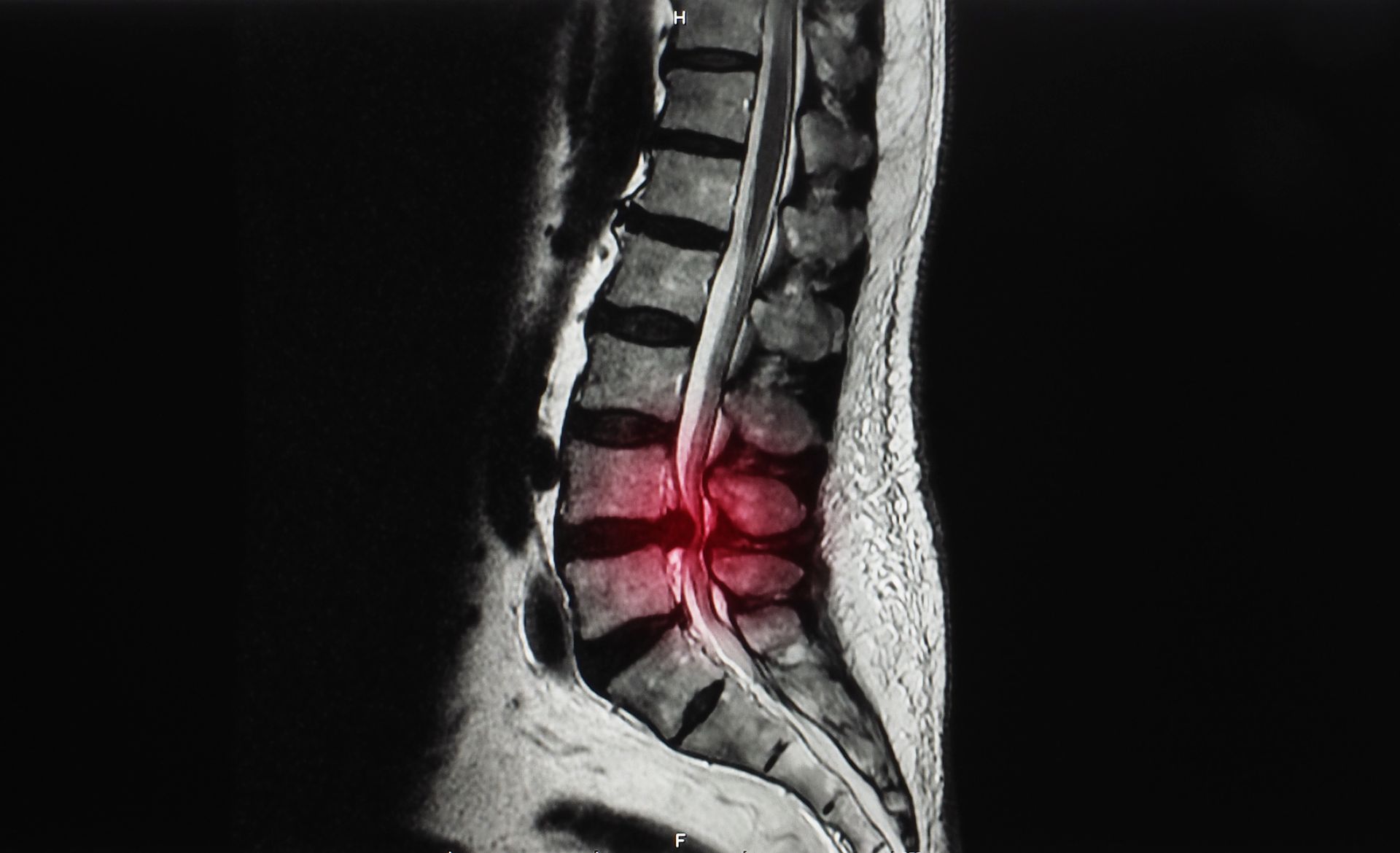Roughly 2 million people in the U.S. suffer car accident-related injuries each year, according to the CDC. Some are obvious right away — broken bones, whiplash, cuts. Others creep in slowly. One of those is spinal stenosis.
Spinal stenosis doesn’t always hit you the same day as the crash. It might show up weeks later — numbness in your arms or legs, pain that radiates down your back, tingling that won’t go away. You might think it’s just soreness or aging. But if the narrowing of your spinal canal started after a car accident, you may be dealing with something serious — and you may be eligible for compensation.
If you’ve been diagnosed with spinal stenosis after an accident, or you’re starting to show signs, this article walks you through what it means, how it connects to auto collisions, and what the spinal stenosis claims process looks like.
Let’s get right into it.
What is spinal stenosis
Spinal stenosis is a condition where the spaces within your spine — particularly the spinal canal — become narrower. This narrowing puts pressure on the nerves traveling through the spine, which can lead to significant pain, numbness, and weakness, often in the arms or legs.
There are two major types of spinal stenosis:
- Cervical stenosis, which occurs in the neck
- Lumbar stenosis, the most common type, which affects the lower back
Symptoms depend on the location and severity of the narrowing. People with cervical spinal stenosis might have trouble with balance, coordination, or hand function. Those with lumbar spinal stenosis often report leg cramps, shooting pain down the legs (sciatica), or a heavy feeling when walking.
You don’t need to be elderly to develop this. While degenerative changes related to aging are a common cause, trauma — like that from a car crash — can cause similar narrowing by altering the structure of the spine.
Can spinal stenosis be caused by an auto accident
Yes. Trauma is a recognized cause of spinal stenosis, especially in previously healthy individuals. The spine is a delicate system of vertebrae, discs, joints, and nerves. A high-impact collision can throw it out of balance instantly.
Here’s what can happen in a crash:
- Bulging or herniated discs
can protrude into the spinal canal.
- Fractured vertebrae
or bone fragments may press against the spinal cord or nerves.
- Whiplash injuries,
especially in rear-end collisions, can destabilize the spine and lead to long-term inflammation or structural changes.
This process doesn’t always trigger immediate symptoms. You might walk away from the accident thinking you’re fine. But over weeks or months, pain, numbness, and weakness may set in as inflammation builds or disc material shifts more into the spinal canal.
It’s not uncommon for patients to be diagnosed with spinal stenosis during imaging done weeks after the crash — often after initial treatments for whiplash or soft tissue injuries fail to resolve the pain. This delayed onset makes documentation extremely important.
Is spinal stenosis a permanent injury
In many cases, yes. Spinal stenosis is considered a degenerative condition, and once it begins, it often doesn’t reverse on its own. Treatment focuses on managing symptoms and slowing progression, not curing the condition.
Physical therapy, anti-inflammatory medications, corticosteroid injections, and chiropractic care may help in the short term. But if these conservative treatments don’t offer relief, surgery may be recommended — typically a laminectomy or spinal fusion. Even then, there’s no guarantee of full recovery.
According to the National Institute of Neurological Disorders and Stroke, the long-term outcome for spinal stenosis varies widely. Some people maintain function with ongoing therapy; others experience progressive disability. If the condition leads to permanent nerve damage, the effects may include chronic pain, loss of mobility, or loss of function in certain limbs.
In legal terms, a permanent injury can significantly increase the value of a personal injury settlement. It impacts your quality of life, your ability to earn income, and sometimes your need for future medical care or home modifications.
Can you drive a car with spinal stenosis
Possibly — but there are limitations. Driving requires physical strength, quick reaction time, and range of motion. If your spinal stenosis limits any of these, driving could be dangerous to you and others.
Cervical stenosis may restrict your ability to turn your head or neck, making it hard to check blind spots. Lumbar stenosis can cause numbness or weakness in the legs, which affects braking or accelerating safely. Long drives might also trigger pain flare-ups or muscle spasms that make it harder to concentrate.
If you’re prescribed painkillers, muscle relaxants, or anti-inflammatories, you may experience drowsiness or delayed response times. These side effects can increase crash risk and may invalidate your car insurance in the event of a collision.
In some cases, people with moderate to severe spinal stenosis have their licenses restricted or suspended based on medical reports. Always talk to your doctor before getting behind the wheel if you’ve been diagnosed.
Will I be paralyzed from spinal stenosis
Paralysis from spinal stenosis is rare, but not impossible. The risk depends on how severely the spinal cord is compressed and where the compression occurs.
The most dangerous area is the cervical spine. If the narrowing of the canal is significant and it compresses the spinal cord, it can result in a condition called myelopathy — which may lead to:
- Muscle weakness
- Loss of balance
- Loss of bladder or bowel control
- Permanent nerve damage
- Partial or full paralysis
Again, these outcomes are not the norm, but they are a possibility in high-impact trauma cases. If you’ve been in a serious crash and are showing signs like sudden weakness, incontinence, or severe nerve pain, you need medical attention immediately.
From a legal standpoint, these severe symptoms greatly increase the potential value of a settlement. They demonstrate not just short-term pain but long-term or permanent disability.
Spinal stenosis claims process
Filing a spinal stenosis claim after a car accident isn’t just about paperwork. It’s about telling the full story — clearly, completely, and backed by evidence.
1. Medical diagnosis and records Everything starts with your diagnosis. A primary care doctor might be the first to flag your symptoms, but you’ll likely need a neurologist or orthopedic spine specialist. Imaging (MRI or CT scans) will confirm whether stenosis is present and what’s causing it.
2. Establishing causation This is where many cases hit a wall. You need to connect your spinal stenosis directly to the accident. Insurance companies will try to argue it was pre-existing, degenerative, or unrelated. That’s why timing, symptoms, and past medical history are critical.An attorney may work with your doctors or hire independent medical experts to help show how the crash caused or worsened the condition.
3. Calculating damages Spinal stenosis can lead to thousands in medical bills, missed work, or reduced future earnings. Other damages can include: - Pain and suffering
- Future treatment needs
- Disability or lifestyle changes
- Loss of ability to participate in normal activities
4. Negotiation or litigation
Once your claim is prepared, your attorney will present it to the insurance company. If the offer isn’t fair, your legal team may file a lawsuit and prepare for trial. Most cases settle before they reach court, but being prepared for both paths is key.
Contact Harper, Evans, Hilbrenner & Netemeyer
Spinal stenosis after a crash isn’t just a health issue. It’s a legal one — and it can impact your future. If you’re struggling with pain, medical bills, or lost wages after an accident, it’s time to speak with an attorney.
At Harper, Evans, Hilbrenner & Netemeyer, we’ve handled countless
injury cases
involving spinal injuries, nerve damage, and long-term impairments. We know what insurance companies look for — and how to fight back with clear, evidence-driven claims.
Reach out for a free case review today. There’s no pressure, and no upfront cost. Let’s talk about your rights, your options, and how we can help.


